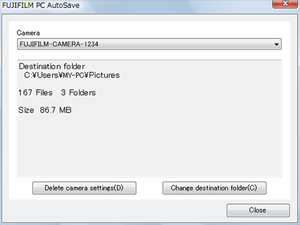
I am not sure why your drawings would not be saving if you are doing a file save or even just typing save at the command line. The sv$ (autosave files) are saved in a directory you specify, again under options on the files tab The bak files should be saved in the same folder as the drawings. I am assuming you have checked the button to create bak files (under options on the open and save tab).

bak files should be created everytime a drawing is saved. The only time you will find sv$ files is if AutoCAD closes abruptly. All that is there is the last close and save file.By nature, the sv$ files are deleted when AutoCAD is exited correctly. In Word (or PowerPoint, Excel, Publisher or Visio), click File > Options > Save. I have looked for BAK and SV$ files where they are supposed to be but to no avail. Microsoft Offices 'autosave' function doesnt save files in your normal 'working' file location. The only way to save a file is to close the program and save as prompted. Doing a "file save" during the drawing doesn't save the latest drawing. Select Tools > Excel Add-ins and clear the check box for the add-in.Recent power failures have created a lot of lost time since the auto save feature set at 10 minutes is not creating bak files. Inactivate an add-in that's causing AutoSave to be disabled. Click Refresh > Connection Properties, and uncheck Refresh data when opening file. Select the table or PivotTable, then go to the Table tab. Turn off the Refresh data when opening file setting on all tables and PivotTables in the file. If possible, remove restricted access: Go to File > Restrict Permissions > No Restrictions.
FUJIFILM PC AUTOSAVE WINDOWS 7 CHECKING FILES TO BE SAVED PASSWORD
If possible, remove password encryption from the file: On the Review tab, click Protect Workbook.

Here is a list of common reasons for it to be disabled: There are other reasons AutoSave could be disabled as well. Note: If your File > Open looks like the image below you must click the Online Locations button, then select your OneDrive or SharePoint file from there, in order for AutoSave to work. Select File > Options > Add-Ins > Excel Add-ins > Go and then clear the check box for the add-in. Then uncheck Refresh data when opening file. Select the table or PivotTable, then go to Table Tools Design > Refresh > Connection Properties. If you are opening a workbook snapshot from SharePoint, choose to open the file instead of the snapshot. If possible, remove restricted access: Go to File > Info > Protect Workbook > Restrict Access and click Unrestricted Access.
If possible, remove password encryption from the file: Go to File > Info > Protect Workbook. It has many limitations, and has been replaced by co-authoring. This feature is an older method of sharing. Do one or more of the following to enable it: If you are using Excel, and tried the above, you may have a file that contains features that are not supported by AutoSave. Your file is embedded inside another Office file.

For more information on updating OneDrive, see Sync files with OneDrive in Windows. Your file is being synced by an older version of the OneDrive sync app. Your file is in a local OneDrive folder and OneDrive synchronization is paused. Here are some common reasons for it to be disabled: This will happen if your file is on a SharePoint on premises site, a file server, some other cloud storage service, or saved to a local path like C:\. If the file is saved to another location (or if it hasn't been saved at all, yet), then AutoSave is disabled. AutoSave is enabled when working on a file that is saved to OneDrive, OneDrive for Business, or SharePoint Online.


 0 kommentar(er)
0 kommentar(er)
